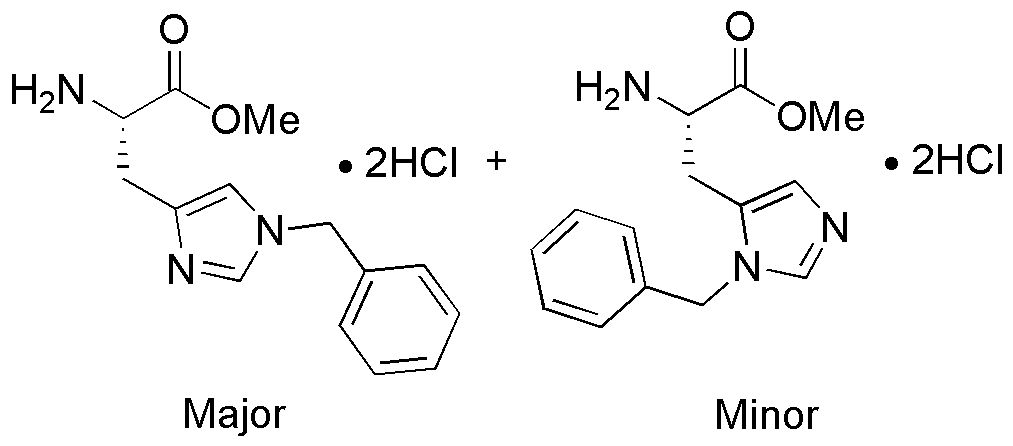Nim-Benzyl-L-histidine methyl ester dihydrochloride is widely utilized in research focused on:
- Pharmaceutical Development: This compound is often used in the synthesis of new drugs, particularly in the development of peptide-based therapeutics, due to its structural similarity to naturally occurring amino acids.
- Biochemical Research: It serves as a valuable tool in studying enzyme interactions and protein synthesis, helping researchers understand complex biological processes.
- Neuroscience Studies: The compound is applied in research related to neurotransmitter systems, aiding in the exploration of potential treatments for neurological disorders.
- Diagnostic Applications: It can be utilized in the development of diagnostic agents that target specific biological markers, enhancing the accuracy of disease detection.
- Material Science: Researchers are investigating its potential in creating novel materials with unique properties, which could lead to advancements in various industrial applications.
General Information
Properties
Safety and Regulations
Applications
Nim-Benzyl-L-histidine methyl ester dihydrochloride is widely utilized in research focused on:
- Pharmaceutical Development: This compound is often used in the synthesis of new drugs, particularly in the development of peptide-based therapeutics, due to its structural similarity to naturally occurring amino acids.
- Biochemical Research: It serves as a valuable tool in studying enzyme interactions and protein synthesis, helping researchers understand complex biological processes.
- Neuroscience Studies: The compound is applied in research related to neurotransmitter systems, aiding in the exploration of potential treatments for neurological disorders.
- Diagnostic Applications: It can be utilized in the development of diagnostic agents that target specific biological markers, enhancing the accuracy of disease detection.
- Material Science: Researchers are investigating its potential in creating novel materials with unique properties, which could lead to advancements in various industrial applications.
Documents
Safety Data Sheets (SDS)
The SDS provides comprehensive safety information on handling, storage, and disposal of the product.
Product Specification (PS)
The PS provides a comprehensive breakdown of the product’s properties, including chemical composition, physical state, purity, and storage requirements. It also details acceptable quality ranges and the product's intended applications.
Certificates of Analysis (COA)
Search for Certificates of Analysis (COA) by entering the products Lot Number. Lot and Batch Numbers can be found on a product’s label following the words ‘Lot’ or ‘Batch’.
Numéro de catalogue
Numéro de lot/série
Certificates Of Origin (COO)
This COO confirms the country where the product was manufactured, and also details the materials and components used in it and whether it is derived from natural, synthetic, or other specific sources. This certificate may be required for customs, trade, and regulatory compliance.
Numéro de catalogue
Numéro de lot/série
Safety Data Sheets (SDS)
The SDS provides comprehensive safety information on handling, storage, and disposal of the product.
DownloadProduct Specification (PS)
The PS provides a comprehensive breakdown of the product’s properties, including chemical composition, physical state, purity, and storage requirements. It also details acceptable quality ranges and the product's intended applications.
DownloadCertificates of Analysis (COA)
Search for Certificates of Analysis (COA) by entering the products Lot Number. Lot and Batch Numbers can be found on a product’s label following the words ‘Lot’ or ‘Batch’.
Numéro de catalogue
Numéro de lot/série
Certificates Of Origin (COO)
This COO confirms the country where the product was manufactured, and also details the materials and components used in it and whether it is derived from natural, synthetic, or other specific sources. This certificate may be required for customs, trade, and regulatory compliance.

